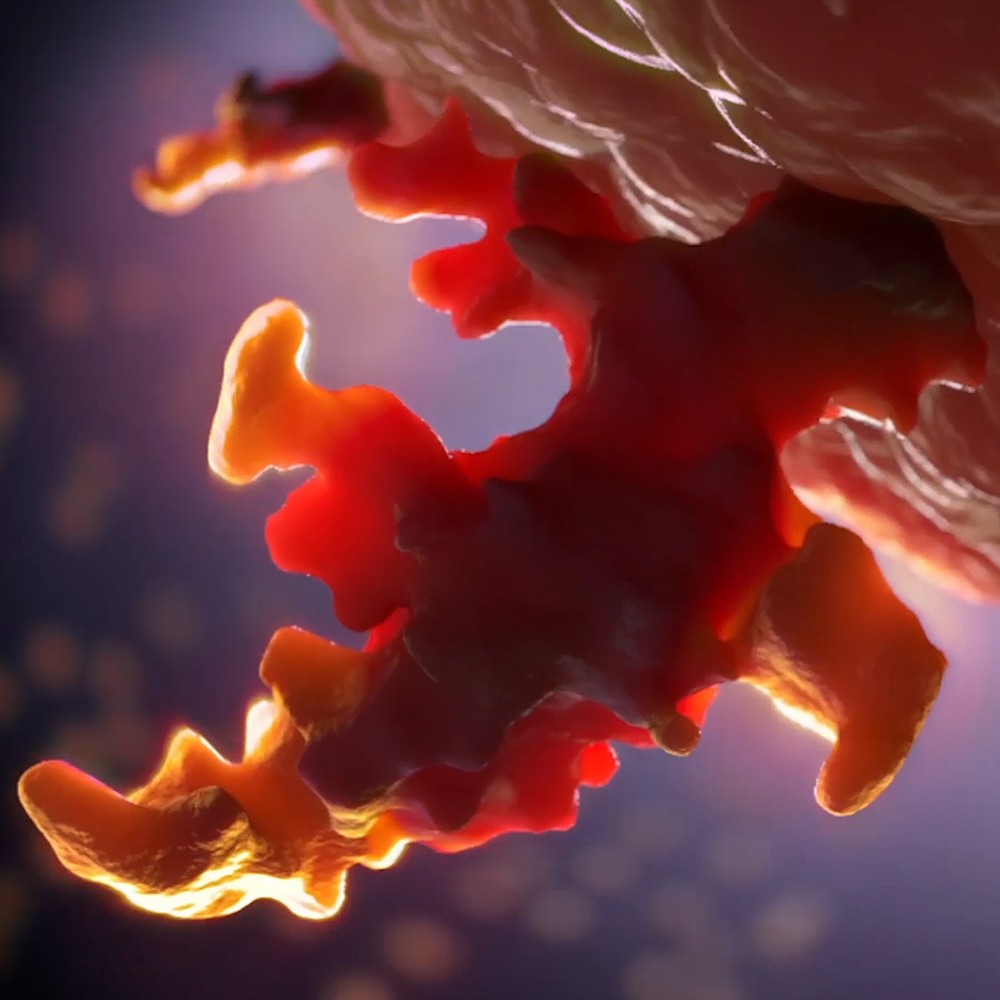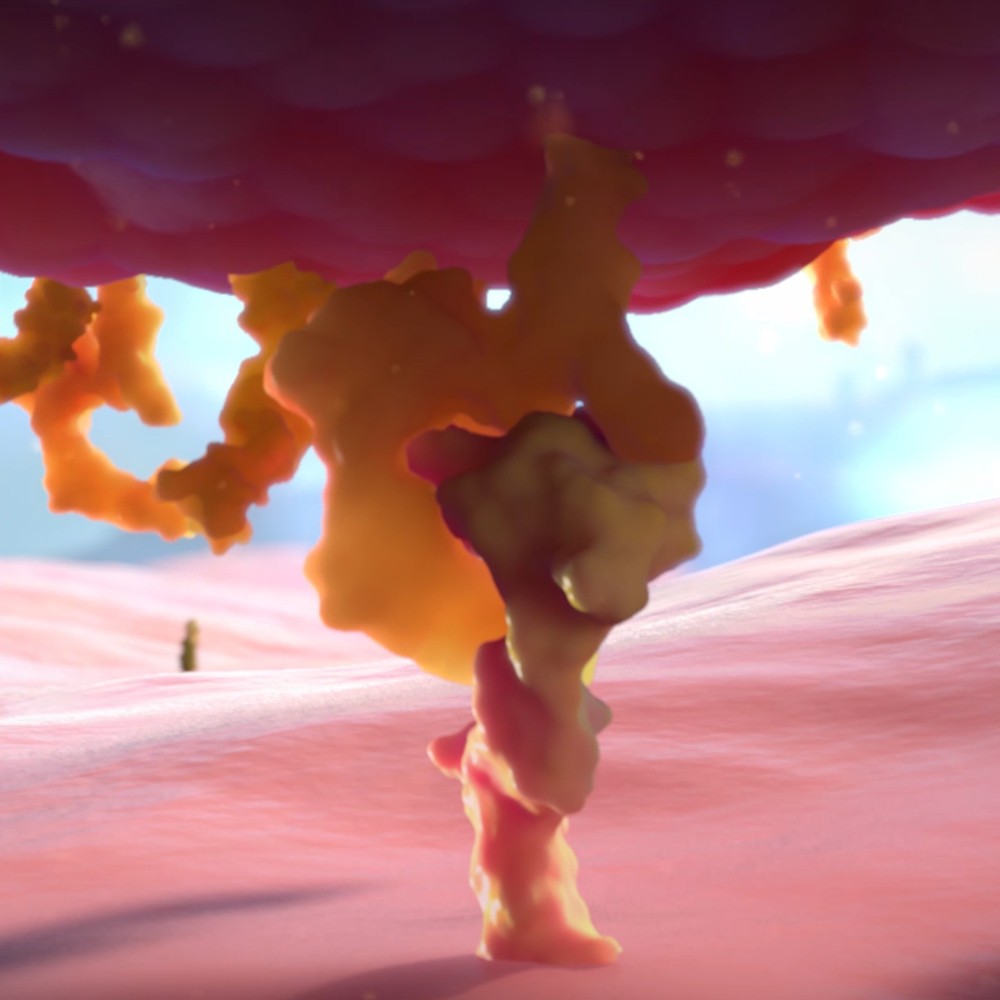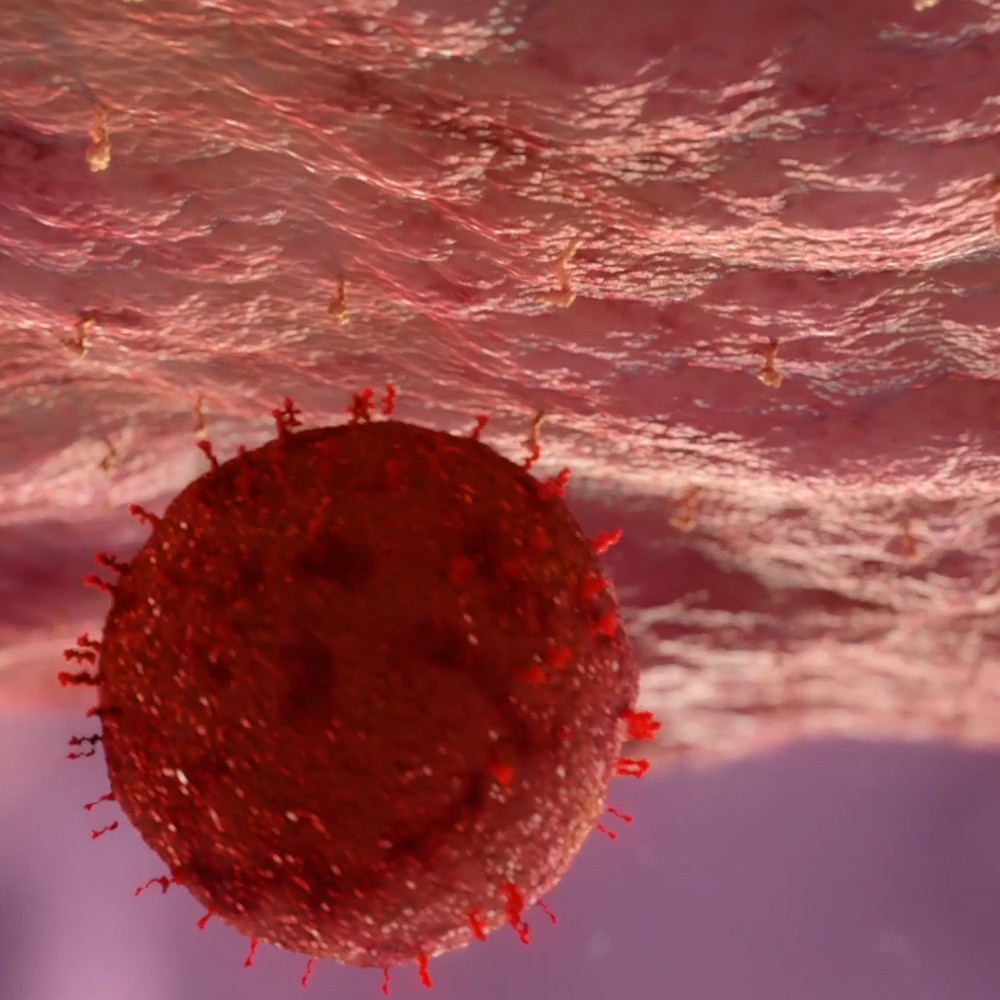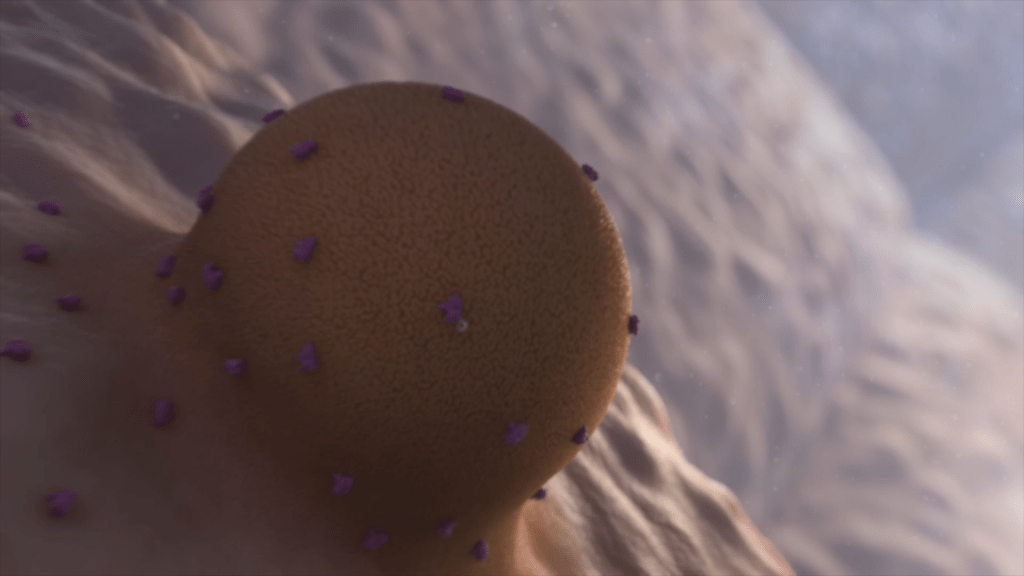
Viruses can evade immune system defenses by mutating over time, or as is the case with the hepatitis B virus, by producing extra surface proteins. These proteins are released into the extracellular space instead of presented on the surface of the virus. The flood of proteins bind with circulating antibodies against hepatitis B and lock them up so the antibodies are less likely to bind to the full viral particle, flagging it for destruction by other immune cells.
The 8th animation in a series of 9 on the immune system and vaccines shows a swarm of hepatitis B proteins that vastly outnumber the neutralizing antibodies, and the viral particle making its escape to infect another cell. Learn more about these animations in our blog, HILLEMAN – A PERILOUS QUEST TO SAVE THE WORLD’S CHILDREN
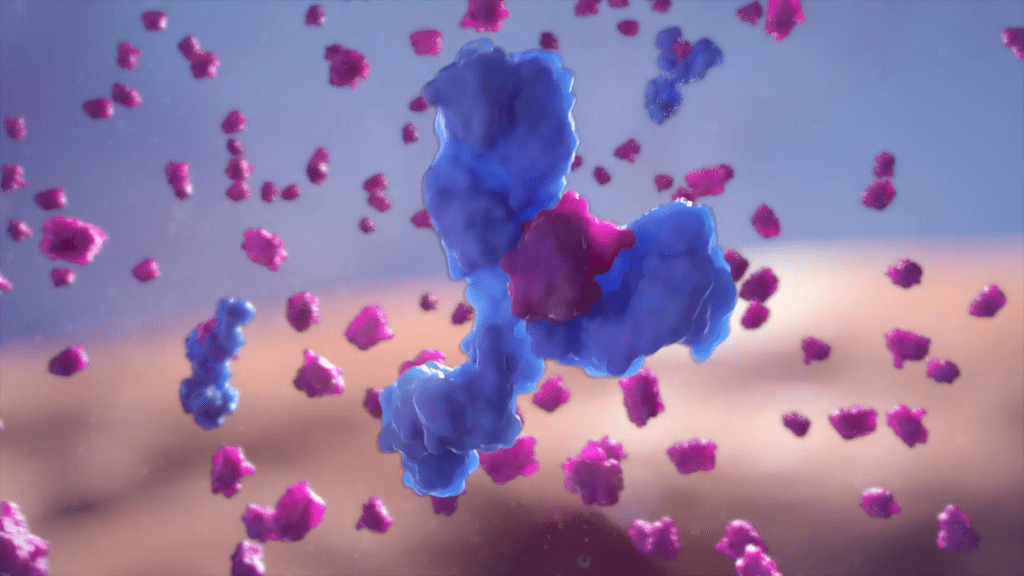
Related Animations
